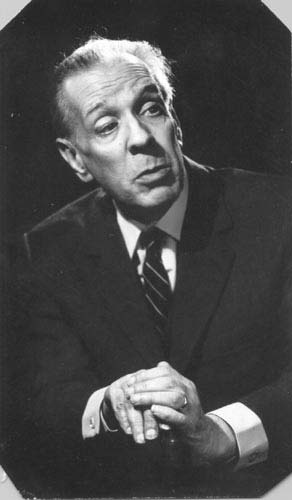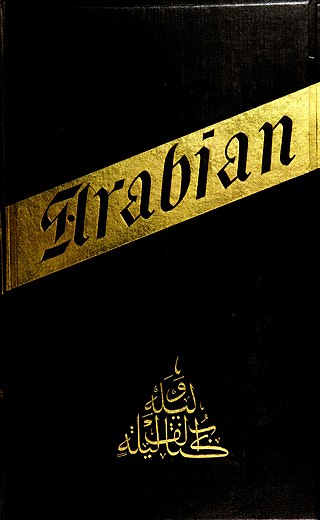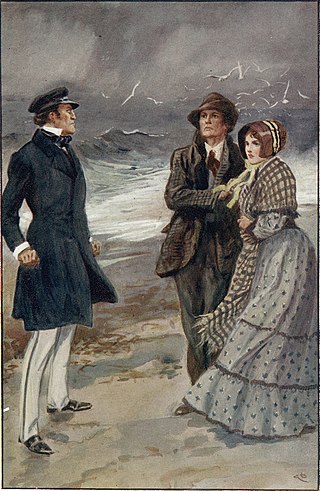Related Research Articles

Robert Louis Stevenson was a Scottish novelist, essayist, poet and travel writer. He is best known for works such as Treasure Island, Strange Case of Dr Jekyll and Mr Hyde, Kidnapped and A Child's Garden of Verses.

A short story is a piece of prose fiction that can typically be read in a single sitting and focuses on a self-contained incident or series of linked incidents, with the intent of evoking a single effect or mood. The short story is one of the oldest types of literature and has existed in the form of legends, mythic tales, folk tales, fairy tales, tall tales, fables and anecdotes in various ancient communities around the world. The modern short story developed in the early 19th century.

One Thousand and One Nights is a collection of Middle Eastern folktales compiled in the Arabic language during the Islamic Golden Age. It is often known in English as the Arabian Nights, from the first English-language edition, which rendered the title as The Arabian Nights' Entertainment.
This article contains information about the literary events and publications of 1877.

Arabic epic literature encompasses epic poetry and epic fantasy in Arabic literature. Virtually all societies have developed folk tales encompassing tales of heroes. Although many of these are legends, many are based on real events and historical figures.
Antoine Galland was a French orientalist and archaeologist, most famous as the first European translator of One Thousand and One Nights, which he called Les mille et une nuits. His version of the tales appeared in twelve volumes between 1704 and 1717 and exerted a significant influence on subsequent European literature and attitudes to the Islamic world. Jorge Luis Borges has suggested that Romanticism began when his translation was first read.

This is a bibliography of works by Argentine short-story writer, essayist, poet, and translator Jorge Luis Borges (1899–1986).

Frances "Fanny" Matilda Van de Grift Osbourne Stevenson was an American magazine writer. She became a supporter and later the wife of Robert Louis Stevenson, and the mother of Isobel Osbourne, Samuel Lloyd Osbourne, and Hervey Stewart Osbourne.

The Book of the Thousand Nights and a Night (1888), subtitled A Plain and Literal Translation of the Arabian Nights Entertainments, is the only complete English language translation of One Thousand and One Nights to date – a collection of Middle Eastern and South Asian stories and folk tales compiled in Arabic during the Islamic Golden Age – by the British explorer and Arabist Richard Francis Burton (1821–1890). It stands as the only complete translation of the Macnaghten or Calcutta II edition of the "Arabian Nights".

The Exotic Enchanter is an anthology of four fantasy short stories edited by American writers L. Sprague de Camp and Christopher Stasheff. The Exotic Enchanter is the second volume in the continuation of the Harold Shea series by de Camp and Fletcher Pratt. It was first published in paperback by Baen Books in 1995; an ebook edition followed from the same publisher in September 2013. All the pieces are original to the anthology.

Island Nights' Entertainments is a collection of short stories by Robert Louis Stevenson, first published in 1893. It would prove to contain some of his final completed work before his death in 1894.
Margery Lawrence was an English romantic fiction, fantasy fiction, horror fiction and detective fiction author who specialized in ghost stories.

"The Pavilion on the Links" (1880) is a short story by Robert Louis Stevenson. It was first published in Cornhill Magazine. A revised version was included in New Arabian Nights (1882).

The Suicide Club is a collection of three 19th century detective fiction short stories by Robert Louis Stevenson that combine to form a single narrative. First published in the London Magazine in 1878, they were collected and republished in the first volume of the New Arabian Nights.

The Rajah's Diamond is a cycle of four short stories by Robert Louis Stevenson. First published in 1878 in a serial periodical London Magazine, they were republished in the first volume of New Arabian Nights. The stories are:
Michael Raymond Donald Ashley is a British bibliographer, author and editor of science fiction, mystery, and fantasy.
"The Beach of Falesá" is a novella by Scottish author Robert Louis Stevenson. It was first published in the Illustrated London News in 1892, and later published in book form in the short-story collection Island Nights' Entertainments (1893). It was written after Stevenson moved to the South Seas island of Samoa just a few years before he died there.
Richard Burgin was an American fiction writer, editor, composer, critic, and academic. He published nineteen books, and from 1996 through 2013 was a professor of Communications and English at Saint Louis University. He was also the founder and publisher of the internationally distributed award-winning literary magazine Boulevard.

Samuel Langhorne Clemens , well known by his pen name Mark Twain, was an American author and humorist. Twain is noted for his novels Adventures of Huckleberry Finn (1884), which has been called the "Great American Novel," and The Adventures of Tom Sawyer (1876). He also wrote poetry, short stories, essays, and non-fiction. His big break was "The Celebrated Jumping Frog of Calaveras County" (1867).
References
- 1 2 Menikoff, Barry (1987), "Class and Culture in the English Short Story", Journal of the Short Story in English 8 (1987), pp. 125-39.
- 1 2 Menikoff, Barry (1990), "New Arabian Nights: Stevenson’s experiment in Fiction", Nineteenth-Century Literature 43 (iii 1990), pp. 339-62.
- ↑ Professor Borges: A Course on English Literature. New Directions Publishing, 2013. ISBN 9780811218757. P. 240.
- ↑ López-Calvo, Ignacio (24 January 2012). Peripheral Transmodernities: South-to-South Intercultural Dialogues between the Luso-Hispanic World and "the Orient". ISBN 9781443837262.